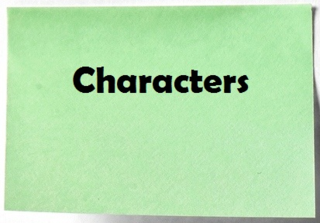Create main character that readers bond with
Virtually every  story aims to establish a bond between the main character and the reader. After all, why would a reader continue to read a story about an unlikeable character?
story aims to establish a bond between the main character and the reader. After all, why would a reader continue to read a story about an unlikeable character?
Granted, there are thematic exceptions, in which the writer’s goal is to examine evil or to convince readers to dislike a character who generally is accepted by society (such as a powerfully businessman who in truth is ruthless). Still, in sush cases often the narrator is likeable (such as Nick in F. Scott Fitgerald’s The Great Gatsby) or we see the tragedy of the main character and feel for his failure (such as Shakespeare’s Macbeth). In any case, such strategies often are the exception to how characters are portrayed in stories.
A writer can establish a bond between the main character in a number of ways:
g Identification –Any time the reader believes he has something significant in common with the character, bonding can occur. For example, in science fiction tales, the character may feel that his intelligence makes him an outcast in society, a trait many science fiction readers themelves possess. In a romance, the heroine’s longings and desires may match those of the reader who also wishes such love.
g Sympathy – A writer also can play off our culture’s values to create a bond. For example, placing a character in jeopardy, showing him undergoing some hardship, portraying him as an underdog, or having him make ethically correct choices that also make him vulnerable all generate empathy in the reader.
g Likeability – Though the reader may not share anything in common with a character, the latter still can be likeable. One way to create a “friendly” character is to give them some unique, quirky trait; for example, Star Wars’ C3PO possesses a neuroticism that is humorous. Avoid cliches, however; the android that misunderstands basic human words or sayings (such as beieving a homemaker is someone who works in the construction trades) has been overdone in science fiction.
g Inner conflict – When a character must make a difficult choice because of an inner conflict, readers can better relate to him. After all, readers themselves often face inner conflicts in which they must make a difficult choice.
g Believability – The more real a character is, the greater the chances that a reader will take a liking to him. While a character, such as an Alpha male hero of an epic fantasy, can provide wish fulfillment (such as being strong and always getting the girl) and hence make the character likeable, he also won’t resonate on a deep level with a reader. Generally a reader cannot identify with or find sympathy for a character who isn’t believable.
Need an editor? Having your book, business document or academic paper proofread or edited before submitting it can prove invaluable. In an economic climate where you face heavy competition, your writing needs a second eye to give you the edge. Whether you come from an urban area like California's Inland Empire or a rural area like Loving County, Texas, I can provide that second eye.
<A HREF="http://ws-na.amazon-adsystem.com/widg... Widgets</A>Related articles
 Constructing your story's main character
Constructing your story's main character Select a viewpoint that gives you flexibility
Select a viewpoint that gives you flexibility



